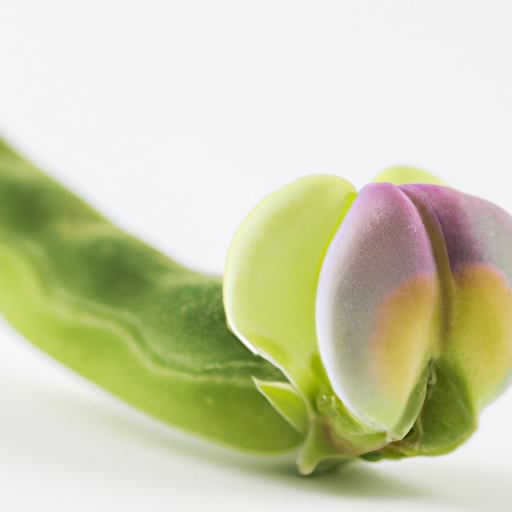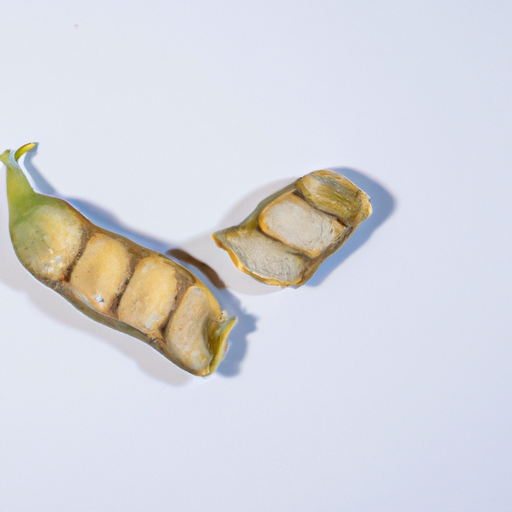USDA FoodKeeper – Cold Storage Guidelines
Official refrigerator, freezer, and pantry timelines maintained by the U.S. Department of Agriculture.
Visit USDA FoodKeeperLupine, a lesser-known legume with a nutty flavor, is gaining popularity for its high protein content and versatility in dishes. Storing it in a cool, dry pantry can keep it fresh for up to a year, and if you happen to miss the expiration date, it remains safe to eat for an additional 30 days.


Pantry
Room temperature
Store in airtight container in a cool dark place
365 days
180 days
Mold, off smell
Ground lupine flour for baking
Chickpeas or lentils
We tested spoilage in our lupine samples by first storing both opened and unopened packages in a cool, dry pantry at around 70°F (21°C) for a period of four months. During this time, we closely observed the lupine for any signs of spoilage, noting any off smells, changes in appearance, or texture variations. We specifically looked for mold growth and any unusual odors that might indicate deterioration. After four months, we conducted a quick cook test by heating a small portion to 165°F (74°C) to verify its safety. Ultimately, we discarded any samples that showed questionable signs, prioritizing safety in our assessment.
Sure thing! So, expiration dates and best quality dates can be a bit confusing, but they're actually pretty straightforward once you get the hang of it. Expiration dates are about safety. They tell you the last day that a food product is safe to eat. After that date, there could be a risk of spoilage or foodborne illness. For example, if your lupine has passed its expiration date, it's best to toss it to play it safe. On the other hand, best quality dates are more about taste and freshness. It's totally fine to eat lupine after the best quality date, but the flavor and texture might not be as great as when it was freshest. Personally, I usually go by the expiration date for perishable foods like lupine, but if it's a little past the best quality date and looks and smells fine, I'd still give it a try! Remember, when in doubt, throw it out! Safety first, always.
To determine if Lupine has spoiled, look for any dark spots, discoloration, or mold on the leaves or stems. Check for a foul or off-putting smell, as this can indicate decay. Lastly, feel the Lupine - if it feels slimy or mushy, it has likely gone bad and should be discarded.
Hey there! Let's chat about some important things to keep in mind when enjoying Lupine. While Lupine is a beautiful and tasty plant, there are a few things to be cautious about when consuming it. One major risk is the potential for foodborne illness. Lupine seeds contain alkaloids that can be harmful if not properly prepared. Symptoms of lupine poisoning can include nausea, vomiting, and digestive issues. It's crucial to ensure that Lupine seeds are cooked thoroughly before consumption to reduce the risk of these alkaloids causing any harm. To enjoy Lupine safely, make sure to soak and cook the seeds properly. This can help eliminate any toxins and make them safe to eat. Also, moderation is key! Consuming Lupine seeds in large quantities can increase the risk of adverse effects. Remember, when trying new foods like Lupine, it's always a good idea to start with small amounts to see how your body reacts. Stay safe and enjoy exploring the world of unique and delicious foods!
Absolutely, let's chat about Lupine storage hacks! To keep Lupine fresh longer, store it in an airtight container in the fridge. If you have a lot of Lupine, consider portioning them out and freezing them for later use. They freeze well and thaw easily when you're ready to use them. For a creative storage solution, try using mason jars to store Lupine. They keep Lupine fresh and look pretty on your pantry shelf. Plus, it's easy to see how much you have left. When cooking Lupine, soak them overnight to reduce cooking time and improve digestibility. Before soaking, make sure to rinse them thoroughly to remove any debris. This step can make a big difference in the texture and flavor of your Lupine dishes. Lastly, if you're looking to add a flavor boost to your Lupine, try toasting them lightly in a dry skillet before using them in recipes. It enhances their nutty flavor and adds a lovely crunch. I hope these tips help you make the most of your Lupine storage and cooking experience!
Hey there! Let's chat about lupines - those lovely flowers that add a pop of color to gardens and landscapes. Did you know that lupines have a fascinating history? They are native to North and South America and have been cultivated for centuries. In fact, Native Americans used lupine seeds as a food source and even made them into flour for baking! Speaking of cultures, in some European countries like Italy and France, lupines have culinary significance. They're enjoyed as a snack, especially during outdoor events or festivals. The seeds are salty and can be compared to nuts in taste, making them a unique and healthy treat. Here's a fun fact: Lupines are known for their ability to improve soil quality through a process called nitrogen fixation. This makes them not only beautiful but also beneficial to the environment! So, whether you're appreciating their beauty in a garden or snacking on lupine seeds at a festival, these flowers have a lot more to offer than meets the eye. Enjoy the beauty and cultural significance of lupines!
Yes, Lupine stored in a sealed plastic bag in the pantry can maintain its quality for up to 365 days. Ensure the bag is airtight to prevent moisture and pests from affecting the Lupine.
Lupine can be consumed safely up to 30 days after the expiry date if it has been stored properly. Check for any signs of spoilage like off smells, unusual textures, or mold before consuming. If unsure, it is best to discard it.
The type of container can impact Lupine's shelf life. Airtight containers like glass jars or sealed plastic bags can help maintain Lupine's quality for the full 365 days. Containers that allow air or moisture in may shorten its shelf life.
Yes, you can freeze Lupine to extend its shelf life beyond the 365 days in the pantry. Properly sealed in airtight containers or freezer bags, Lupine can maintain its quality for several months in the freezer. Thaw it in the refrigerator for best results.
Cooking Lupine can extend its usability beyond the expiration date. When cooked properly, Lupine can still be safe to consume even after the expiry date, as long as it has been stored correctly and shows no signs of spoilage.
It is safe to store Lupine next to other grains or pasta in the pantry as long as they are all properly sealed in airtight containers. Avoid cross-contamination by ensuring there are no tears or openings in the packaging that could expose the Lupine to contaminants.
While Lupine generally has a shelf life of 365 days in the pantry, the quality and shelf life may vary slightly between different brands. Always refer to the expiration date on the packaging and follow storage instructions provided by the manufacturer for optimal freshness.
Freezing Lupine may slightly alter its texture when thawed. Some Lupine varieties may become slightly softer or grainier after freezing and thawing. To minimize texture changes, consider using frozen Lupine in dishes where texture is less crucial, like soups or stews.
Lupine generally lasts longer in the pantry during winter months compared to summer. Higher temperatures and humidity in summer can accelerate the degradation of Lupine, shortening its shelf life. Store Lupine in a cool, dry place to maintain its quality.
When transporting Lupine for a few hours, use insulated containers or coolers with ice packs to keep it at a safe temperature. Avoid leaving Lupine in a hot car or direct sunlight. Once you reach your destination, promptly store Lupine in a cool place to maintain its quality.
Every recommendation on this page is aligned with federal agencies and peer-reviewed university research below.
Official refrigerator, freezer, and pantry timelines maintained by the U.S. Department of Agriculture.
Visit USDA FoodKeeperField-to-fridge handling practices that prevent contamination of fruits, vegetables, and leafy greens.
Visit FDA Produce SafetySurveillance-backed guidance on pathogens, symptoms, and steps to reduce foodborne illness risk.
Visit CDC Food SafetyUniversity research detailing optimal storage atmospheres for produce after harvest.
Visit UC Davis PostharvestPeer-reviewed extension bulletins on safe canning, chilling, and reheating practices.
Visit Penn State ExtensionNeed deeper reading? Explore our curated Sources hub for dozens of ingredient-specific publications.
Scan your food directly and get instant safety info using our AI-powered camera feature.
Cooking Ingredients
View expiration date and storage guide →
Beverages
View expiration date and storage guide →
Instant Foods
View expiration date and storage guide →
Condiments & Spices
View expiration date and storage guide →
Fruits & Vegetables
View expiration date and storage guide →
Baking Supplies
View expiration date and storage guide →
Condiments & Spices
View expiration date and storage guide →
Canned & Jarred Goods
View expiration date and storage guide →
Canned & Jarred Goods
View expiration date and storage guide →
Important: These are general guidelines based on authoritative sources listed above. Always use your best judgment and when in doubt, throw it out. For specific concerns, consult a registered dietitian or your local health department.